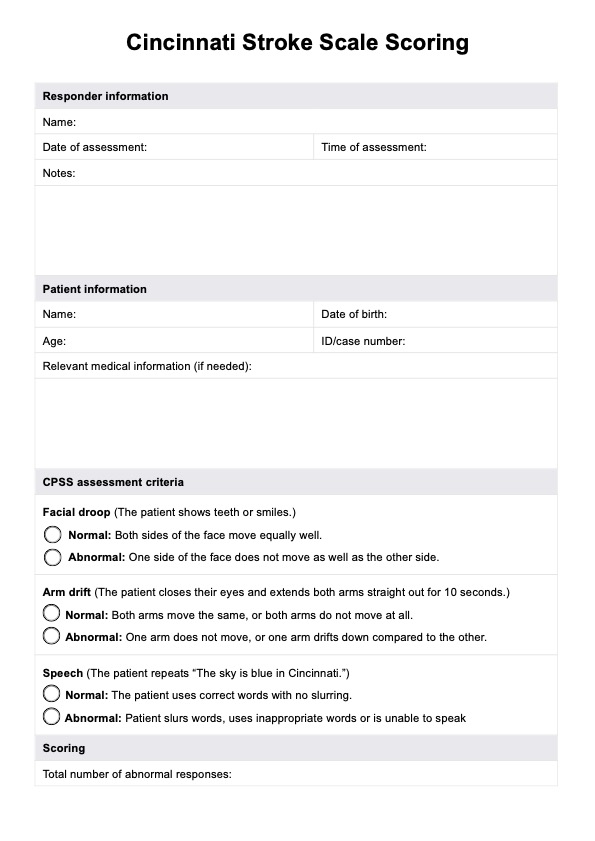The Cincinnati stroke scale is a quick assessment tool that healthcare professionals use to identify potential stroke symptoms in patients. It evaluates three key areas, facial droop, arm drift, and speech abnormalities, to determine the likelihood of a stroke.

Cincinnati Stroke Scale Scoring
Identify stroke symptoms with the Cincinnati Stroke Scale Scoring guide, which is essential for emergency responders and healthcare professionals.
Cincinnati Stroke Scale Scoring Template
Commonly asked questions
The CPSS does not utilize numerical score values. Instead, it identifies suspected stroke symptoms based on three tests. If any of the tests—facial droop, arm drift, or speech difficulties—show abnormalities, it suggests a possible stroke.
To use the stroke severity scoring template on Carepatron, log into your account and navigate to the template section. Select the stroke scale scoring template and input the individual patient data, including the facial droop, arm drift, and speech tests. Carepatron will help organize and store this information for easy access and follow-up.
EHR and practice management software
Get started for free
*No credit card required
Free
$0/usd
Unlimited clients
Telehealth
1GB of storage
Client portal text
Automated billing and online payments











